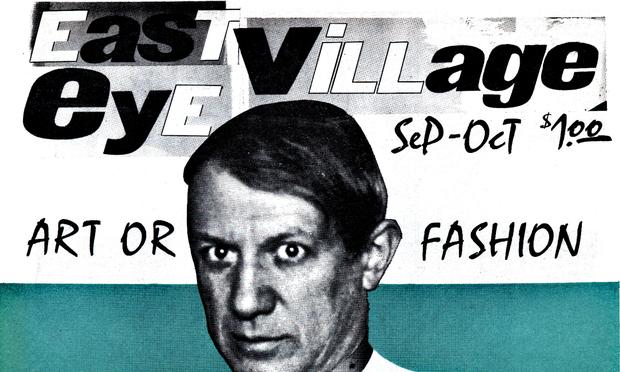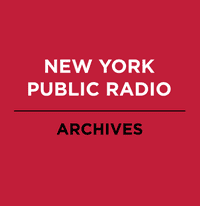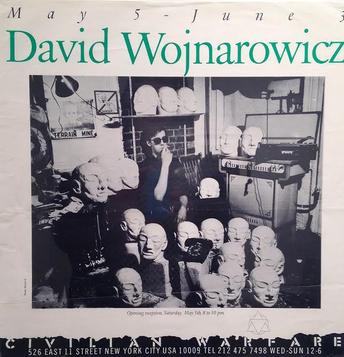The Rise and Fall of the East Village Art Scene
Friday, December 12, 2014 - 04:00 AM
WNYC
Play
00:00 / 00:00
Artists in the City was produced in cooperation with the Public Art Fund. The program featured interviews with artists, curators, administrators, and other participants active in the arts scene in the 1970s and 1980s.
It's a story that seems to repeat itself again and again in New York City. Artists, seeking large affordable live/work spaces, move into cheap and oft-neglected neighborhoods. The influx of the creative class signals to the upwardly mobile that it's OK to relocate. Quickly and inevitably, costs rise, and the artists uproot to the next affordable enclave.
The classic example of artist-led gentrification is SoHo. And although the idea that artists are actually responsible for New York's gentrification is hotly debated, there is a prevalent sense in this 1983 interview that the East Village offered what SoHo no longer could: reasonable real estate prices and a community of like-minded artists and gallery owners.
"Why the East Village?" is the first question host Jenny Dixon poses to Peter Nagy and Alan Belcher from Nature Morte Gallery and Dean Sevard of Civilian Warfare. It's partly economic they say, but the move to the East Village also reinforces their philosophical and aesthetic differences with the SoHo scene. For example, gallery owners in the East Village are often artists themselves (mainly in their early to mid-20s), who live behind the storefronts where they show work. Nature Morte focuses on two- and three-person group shows, largely consisting of their artist friends, and Sevard describes Civilian Warfare's shows as "anti-SoHo" and having a tacitly political focus. His list of recent openings includes "Black Art Now", "The Art of Tyranny", and "Hit and Run Numbers One and Two."
There is something suggestively violent in both the descriptions of the gallery shows and the names of the two galleries themselves. Dixon jokes that the East Village identity is very much caught up in Reagan-era Cold War concerns. However, there is also a sense that the names Nature Morte and Civilian Warfare address a distinctly local character. In a 1983 article in the New York Times entitled "Gallery View; A Gallery Scene that Pioneers in New Territory", arts editor Grace Glueck writes that the neighborhood is still "hairy" enough that the word "dealer" takes on a double meaning. And the writer and filmmaker Gary Indiana - reminiscing nearly 20 years later - describes the neighborhood as a "piquantly semi-dangerous place for kids" that has a "full dance card of subterranean amusements."
The conversation quickly shifts from talk of curation and neighborhood identity to the bureaucratic details of arts organizations in the 1980s. Dixon is interested as to why these particular galleries chose to open commercial spaces rather than following the lead of popular non-profit art/social centers like ABC No Rio. Dixon wonders, did the formation of the NEA in 1965 and the subsequent influx of federal funding change the culture of art in New York City? Is there an attempt by the new generation of artists and gallery owners to go back to what Dixon describes as "art before the dole"?
Belcher, Nagy, and Sevard suggest that terms like "community arts non-profit" or "alternative space" are concepts from a different generation. Dixon thinks that perhaps these new galleries are looking back to a pre-NEA time when artists like Claus Oldenburg opened his Lower East Side store front in the early 60s. "There's a great feeling of OK the NEA is here" Dixon says, "but sometimes, often, perhaps artists can do more when they don't feel like they have their fingers tied [with federal money]."
In recent years there has been a fair amount of 'looking back' to this time in the art world. In 2004, the New Museum mounted a large survey of the East Village scene. And many artists who emerged from the era went on to become influential pillars of contemporary art (Keith Haring, Jean-Michel Basquiat, Jeff Koons). Peter Nagy was only 23 at the time of this interview and shut down Nature Morte in 1988 (the original location on 204 east 10th street is now the home of a 'fine dry cleaning and tailoring' establishment). Civilian Warfare closed in 1988, and by the end of that year, the media was signaling the demise - and fading allure - of Manhattan's "third art district."
In a 1987 article in the New York Times titled "Art Boom Slows In the East Village", explaining the shift in the East Village art scene, gallerist Doug Milford said ''It's less of a happening and more of a business. When we opened, we were just trying to start something for ourselves and our artist friends. When they started to achieve success, they needed professional representation, and that meant getting up a little earlier in the morning, being a little more serious.''




No comments:
Post a Comment
Please leave a comment-- or suggestions, particularly of topics and places you'd like to see covered